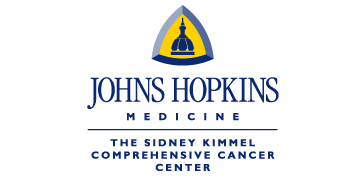- Advertise
- About OncLive
- Editorial Board
- MJH Life Sciences brands
- Contact Us
- Privacy
- Terms & Conditions
- Do Not Sell My Information
2 Clarke Drive
Suite 100
Cranbury, NJ 08512
© 2025 MJH Life Sciences™ and OncLive - Clinical Oncology News, Cancer Expert Insights. All rights reserved.
Dr Levy on the Ongoing Development of TROP-2 ADCs in NSCLC
Benjamin Philip Levy, MD, discusses the ongoing development of the TROP-2 directed antibody-drug conjugates sacituzumab govitecan-hziy and datopotamab deruxtecan in non–small cell lung cancer, their different toxicity profiles, as well as the potential categorization of emerging ADCs as onco-directed therapies in this patient population.
Benjamin Philip Levy, MD, associate professor, oncology, Johns Hopkins University School of Medicine; clinical director, Medical Oncology, Johns Hopkins Sidney Kimmel Cancer Center, Sibley Memorial Hospital, discusses the ongoing development of the TROP-2 directed antibody-drug conjugates (ADCs) sacituzumab govitecan-hziy (Trodelvy) and datopotamab deruxtecan (Dato-DXd; DS-1062a) in non–small cell lung cancer (NSCLC), their different toxicity profiles, as well as the potential categorization of emerging ADCs as onco-directed therapies in this patient population.
Both sacituzumab govitecan and Dato-DXd show potential in non-small cell lung cancer (NSCLC), Levy begins. Sacituzumab govitecan, which was originally evaluated in 2017 for NSCLC, is being reexamined in both the second– and first-line settings, Levy states. Additionally, datopotamab deruxtecan was initially explored as a monotherapy for heavily pretreated patients with NSCLC. However, it is now being compared with docetaxel in the second-line setting of a phase 3 trial, with recent data indicating that the agent confers a progression-free survival advantage in patients with non-squamous histologies, he explains.
These TROP-2 directed ADCs have both shown efficacy in the second-line, and efforts to utilize these agents in earlier lines have shown initial activity in smaller datasets, Levy continues. The continued investigation of these agents raises the question of whether these agents may replace platinum chemotherapy, he says. Although this outcome is currently unlikely, forthcoming data may further elucidate their potential impact on the treatment paradigm.
Although cross-trial comparisons require caution, these ADCs appear to demonstrate similar activity when combined with immunotherapy in the frontline, Levy expands. The phase 3 EVOKE-01 trial (NCT05089734) of sacituzumab govitecan vs docetaxel may confirm their similarity, as these data could be more easily compared with that of the phase 3 TROPION-Lung01 trial (NCT04656652), Levy emphasizes. However, they display more distinct toxicity profiles, with sacituzumab govitecan being associated with a higher frequency of cytopenias, and Dato-DXd being associated with increased stomatitis. Vigilant management strategies are essential for optimizing patient outcomes, he states.
As ADCs like sacituzumab govitecan and Dato-DXd continue to emerge, they may be categorized as onco-directed therapies. This indicates that a given agent may provide particular benefit for patients expressing specific driver alterations, Levy continues. Notably, ADCs with activity against both EGFR- and HER2-mutant disease, as well as MET-overexpressing NSCLC, have demonstrated encouraging results. Trastuzumab deruxtecan-nxki (Enhertu; T-DXd) has demonstrated efficacy in patients with exon 20 mutations, while patritumab deruxtecan (HER3-DXd) and telisotuzumab vedotin (ABBV-399; Teliso-V) both have breakthrough designation in NSCLC, he elucidates.
The advent of ADCs in NSCLC represents a paradigm shift in the approach to treating patients with NSCLC, with potential approvals for T-DXd and Dato-DXd on the horizon, Levy addes. Improved understanding of their clinical profiles, toxicities, and sequencing will be pivotal to ensuring effective patient care and informed decision-making, he concludes.


